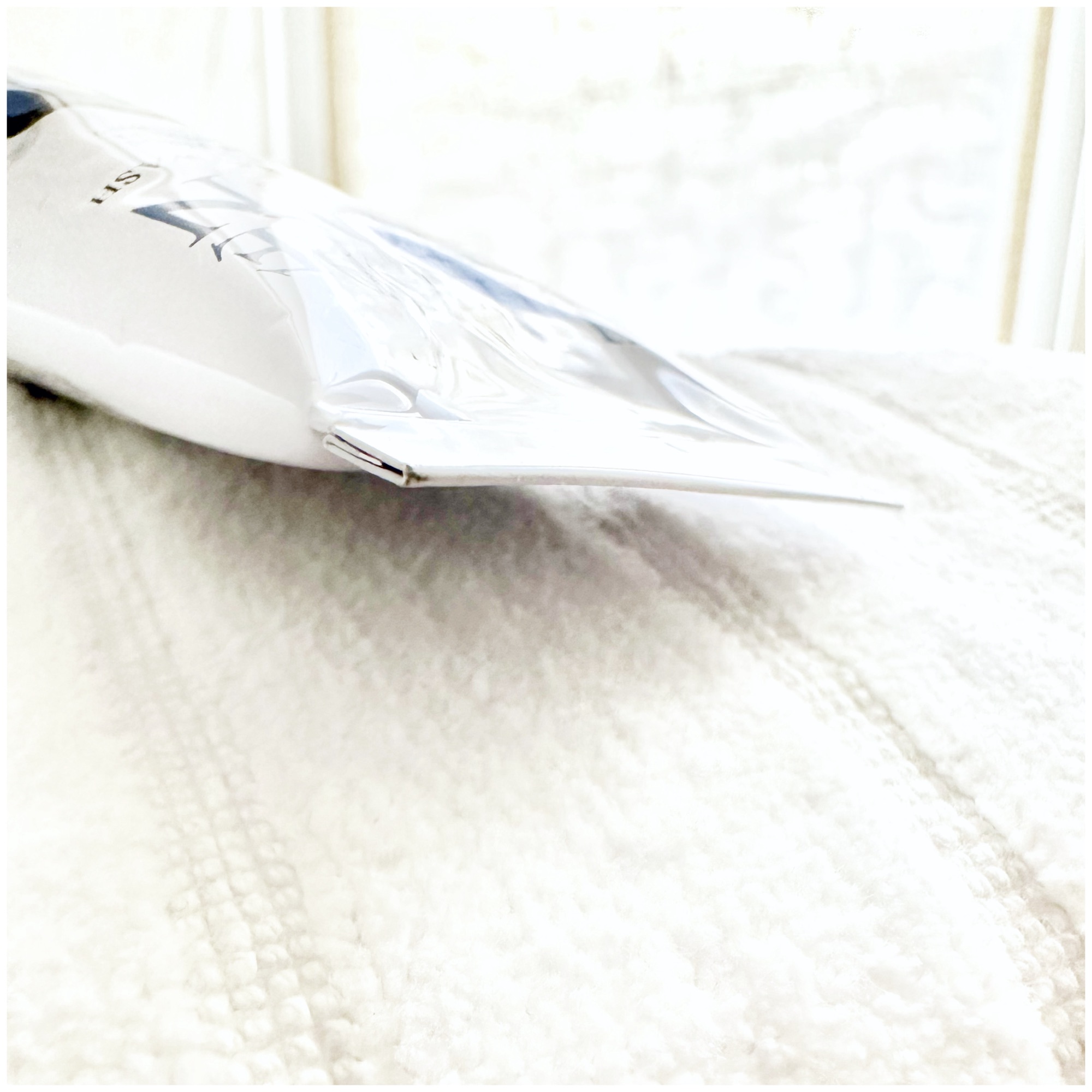Allergen
Rubber
This top contact allergen is known to cause rashes, peeling, itching but also hyper- and hypo-pigmentations.
Complicating things somewhat is that reactions to rubber can be due to the natural latex sap of the rubber tree or an allergy to the different chemicals used in the manufacturing of rubber such as:
- Thiuram
- Pigments and Paraphenylenediamene (PPD; black colorant)
- Carba mix
- Mercapto Mix
- Mixed dialkyl thiourea
- Diphenylguanidine — diphenylguanidine is used widely for its antioxidant properties, as an industrial antioxidant, dye mordant, and reagent. It is also employed in agriculture as a fungicide and antihelmintic so when buying non-organic plants, avoid touching vegetables if you have patch tested positive to this.
If you’ve patch tested positive to rubber, it’s a good idea to be cautious with coming into contact with avocado and mango (or poison ivy, which has a similar skin), as well as tomato, peach, kiwi, tomato, banana, figs, passion fruit, and chestnuts.
Look out for rubber in swimming goggles and other swimming and diving gear, flip flops and shoes, but also elastics in clothing and underwear, some cosmetics, skincare products and makeup sponges, gardening and kitchen supplies, gloves, electronic and digital gear (phone and tablet cases, cables, earphones), handles (on bags, gym equipment, bike handles, steering wheels, etc.), weights, helmets, and exercise mats, medical gloves, devices and equipment, even balloons, pillows, mattresses, chairs and protective foam, menstrual cups, diaphragms, and rubber latex condoms … and more.
Other helpful tips:
- Get a patch test so you’re not guessing. Rubber is present in lots of safety equipment that should not be optional. You want to be clear about what materials you can use.
- Make an effort to contact the manufacturer to confirm if the equipment you need to use contains your allergens.
- Disclose your allergies to rubber and other positive results from your patch test to your doctor or dentist before any procedure, even before they choose which gloves to use when examining you.
- Try using an organic, light-colored or uncolored natural fabric in between your skin and areas of contact (such as between your skin and work gloves, helmet, or treadmill handles).
- Apply a mineral barrier-protective product like Stay-On-Point! or Armada Baby or Post-Procedure thickly on exposed skin.
- Because soooooo many things contain rubber, related allergens, or allergens that go into the making of rubber, be extra conscious about avoiding allergens and irritants in everything else you use, including body wash or soap, shampoo and conditioner, skincare, and makeup.
- For barrier repair of irritated skin and microbiome balance, massage Know-It-Oil or Oil’s Well liberally all over your face, hands, and other exposed skin before bed.
If you have a history of sensitive skin…
…don’t guess! Random trial and error can cause more damage. Ask your dermatologist about a patch test.
To shop our selection of hypoallergenic products, visit vmvhypoallergenics.com. Need help? Ask us in the comments section below, or for more privacy (such as when asking us to customize recommendations for you based on your patch test results) contact us by email, or drop us a private message on Facebook.
For more:
- On the prevalence of skin allergies, see Skin Allergies Are More Common Than Ever.
- For the difference between irritant and allergic reactions, see It’s Complicated: Allergic Versus Irritant Reaction.
- For the difference between food, skin, and other types of reactions: see Skin & Food Allergies Are Not The Same Thing.
- To learn about the VH-Rating System and hypoallergenicity: What Is The Validated Hypoallergenic Rating System?
Main References:
Regularly published reports on the most common allergens by the North American Contact Dermatitis Group and European Surveillance System on Contact Allergies (based on over 28,000 patch test results, combined), plus other studies. Remember, we are all individuals — just because an ingredient is not on the most common allergen lists does not mean you cannot be sensitive to it, or that it will not become an allergen. These references, being based on so many patch test results, are a good basis but it is always best to get a patch test yourself.
1. Warshaw, E.M., Maibach, H.I., Taylor, J.S., et al. North American contact dermatitis group patch test results: 2011-2012. Dermatitis. 2015; 26: 49-59.
2. W Uter et al. The European Baseline Series in 10 European Countries, 2005/2006–Results of the European Surveillance System on Contact Allergies (ESSCA). Contact Dermatitis 61 (1), 31-38.7 2009.
3. Wetter, DA et al. Results of patch testing to personal care product allergens in a standard series and a supplemental cosmetic series: An analysis of 945 patients from the Mayo Clinic Contact Dermatitis Group, 2000-2007. J Am Acad Dermatol. 2010 Nov;63(5):789-98.
4. Verallo-Rowell VM. The validated hypoallergenic cosmetics rating system: its 30-year evolution and effect on the prevalence of cosmetic reactions. Dermatitis 2011 Apr; 22(2):80-97.
5. Ruby Pawankar et al. World Health Organization. White Book on Allergy 2011-2012 Executive Summary.
6. Misery L et al. Sensitive skin in the American population: prevalence, clinical data, and role of the dermatologist. Int J Dermatol. 2011 Aug;50(8):961-7.
7. Warshaw EM1, Maibach HI, Taylor JS, Sasseville D, DeKoven JG, Zirwas MJ, Fransway AF, Mathias CG, Zug KA, DeLeo VA, Fowler JF Jr, Marks JG, Pratt MD, Storrs FJ, Belsito DV. North American contact dermatitis group patch test results: 2011-2012.Dermatitis. 2015 Jan-Feb;26(1):49-59.
8. Warshaw, E et al. Allergic patch test reactions associated with cosmetics: Retrospective analysis of cross-sectional data from the North American Contact Dermatitis Group, 2001-2004. J AmAcadDermatol 2009;60:23-38.
9. Foliaki S et al. Antibiotic use in infancy and symptoms of asthma, rhinoconjunctivitis, and eczema in children 6 and 7 years old: International Study of Asthma and Allergies in Childhood Phase III. J Allergy Clin Immunol. 2009 Nov;124(5):982-9.
10. Kei EF et al. Role of the gut microbiota in defining human health. Expert Rev Anti Infect Ther. 2010 Apr; 8(4): 435–454.
11. Thavagnanam S et al. A meta-analysis of the association between Caesarean section and childhood asthma. Clin Exp Allergy. 2008;38(4):629–633.
12. Marks JG, Belsito DV, DeLeo VA, et al. North American Contact Dermatitis Group patch-test results, 1998 to 2000. Am J Contact Dermat. 2003;14(2):59-62.
13. Warshaw EM, Belsito DV, Taylor JS, et al. North American Contact Dermatitis Group patch test results: 2009 to 2010. Dermatitis. 2013;24(2):50-99.
14. Verallo-Rowell V. M, Katalbas S.S. & Pangasinan J. P. Natural (Mineral, Vegetable, Coconut, Essential) Oils and Contact Dermatitis. Curr Allergy Asthma Rep 16,51 (2016) . https://doi.org/10.1007/s11882-016-0630-9.
15. de Groot AC. Monographs in Contact Allergy, Volume II – Fragrances and Essential Oils. Boca Raton, FL: CRC Press Taylor & Francis Group; 2019.
16. De Groot AC. Monographs in Contact Allergy Volume I. Non-Fragrance Allergens in Cosmetics (Part I and Part 2). Boca Raton, Fl, USA: CRC Press Taylor and Francis Group, 2018.
Want more great information on contact dermatitis? Check out the American Contact Dermatitis Society, Dermnet New Zealand, and your country’s contact dermatitis association.
Laura is our “dew”-good CEO at VMV Hypoallergenics and eldest daughter of VMV’s founding dermatologist-dermatopathologist. She has two children, Madison and Gavin, and works at VMV with her sister CC and husband Juan Pablo (Madison and Gavin frequently volunteer their “usage testing” services). In addition to saving the world’s skin, Laura is passionate about health, inclusion, cultural theory, human rights, happiness, and spreading (like a VMV cream!) goodness!








